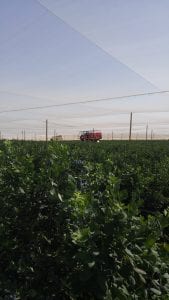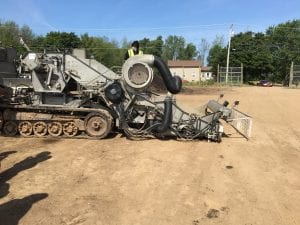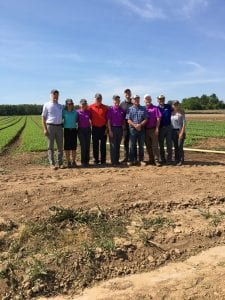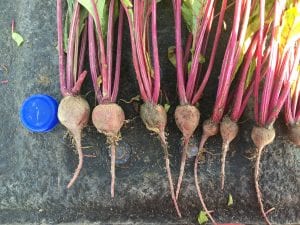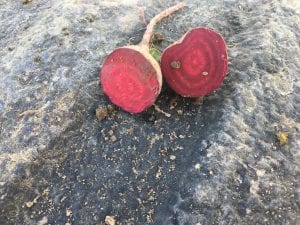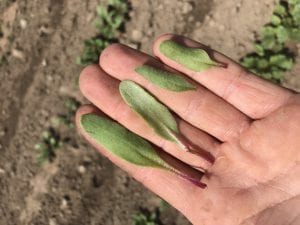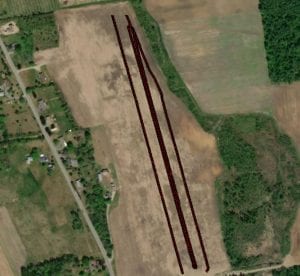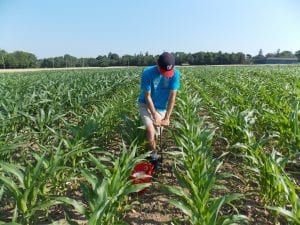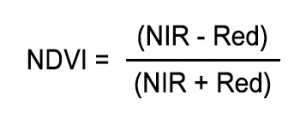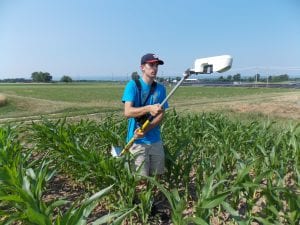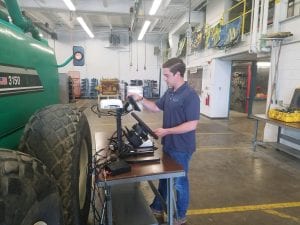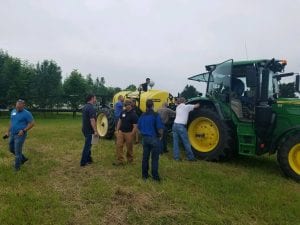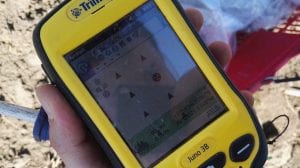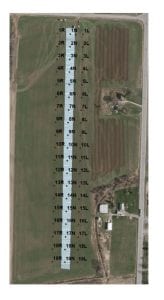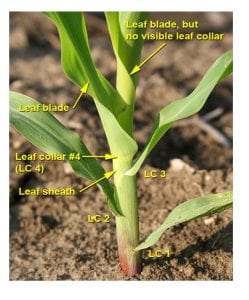 While Johnny Appleseed may have given many people the view that apples can be planted anywhere and maintain their growth perfectly for many years, this is unfortunately not the case. Apples are susceptible to diseases, pest pressures, and, if left alone, may not bear perfect-or hardly any-fruit every year. Growing up on a wheat farm, I knew about spraying fungicides and pesticides, but I never thought I would run into the problem of the crop having too high of a yield. Apples run into issues when they produce too much fruit, and can often fall into a biennial fruit bearing systems, meaning that they will produce a high volume of fruit one year, but none the next. Many farmers spray chemical thinners when the trees are pollinating, which allow the king bud (the first bud to emerge) to remain, but prevents the subsequent buds from becoming fruit. At the Orchards, one of the research projects is focused on achieving the ideal crop load for producers, while preventing the tree from taking on a biennial growth pattern. Here is an example of a tree that has several fruit per cluster, which we (the interns) would then thin down (remove fruit from the trees) to a single fruit per cluster, ideally the king bud.
While Johnny Appleseed may have given many people the view that apples can be planted anywhere and maintain their growth perfectly for many years, this is unfortunately not the case. Apples are susceptible to diseases, pest pressures, and, if left alone, may not bear perfect-or hardly any-fruit every year. Growing up on a wheat farm, I knew about spraying fungicides and pesticides, but I never thought I would run into the problem of the crop having too high of a yield. Apples run into issues when they produce too much fruit, and can often fall into a biennial fruit bearing systems, meaning that they will produce a high volume of fruit one year, but none the next. Many farmers spray chemical thinners when the trees are pollinating, which allow the king bud (the first bud to emerge) to remain, but prevents the subsequent buds from becoming fruit. At the Orchards, one of the research projects is focused on achieving the ideal crop load for producers, while preventing the tree from taking on a biennial growth pattern. Here is an example of a tree that has several fruit per cluster, which we (the interns) would then thin down (remove fruit from the trees) to a single fruit per cluster, ideally the king bud.
 One research trial that has preceded my time as an intern, focuses on thinning trees down to 3, 6, or 9 times the fruit as the tree’s diameter, measured 12 inches above the graft union (the spot where new growth of trees are grafted onto their rootstock). There is also a category of trees that is thinned down to 0 fruit, or left unthinned.
One research trial that has preceded my time as an intern, focuses on thinning trees down to 3, 6, or 9 times the fruit as the tree’s diameter, measured 12 inches above the graft union (the spot where new growth of trees are grafted onto their rootstock). There is also a category of trees that is thinned down to 0 fruit, or left unthinned.
The Orchards staff and my fellow interns have spent long hours counting fruit, thinning fruit, counting, and trying to reach a specific, total number of fruit per tree. This will allow the researchers to note the number of fruit remaining in subsequent years, so they can allow producers to time their chemical thinners to a specific time. Here is an image of us diligently working on the project with staff at Cornell Cooperative Extension. While it may seem simple to thin fruit, it took many hours to achieve perfection on this research project.


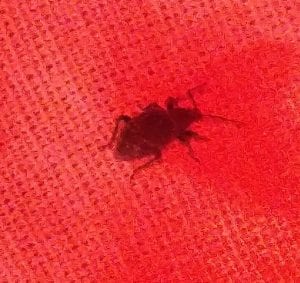
 each field into thirds and chose a lane to take our counts from. We stopped at three points in our row, laid out a tarp, and beat the back of a bine with a stick to see how many weevils fell out. We recorded the number of weevils that fell onto the tarp. There were only a few fields that had relatively high counts and control methods have yet to be determined.
each field into thirds and chose a lane to take our counts from. We stopped at three points in our row, laid out a tarp, and beat the back of a bine with a stick to see how many weevils fell out. We recorded the number of weevils that fell onto the tarp. There were only a few fields that had relatively high counts and control methods have yet to be determined.
